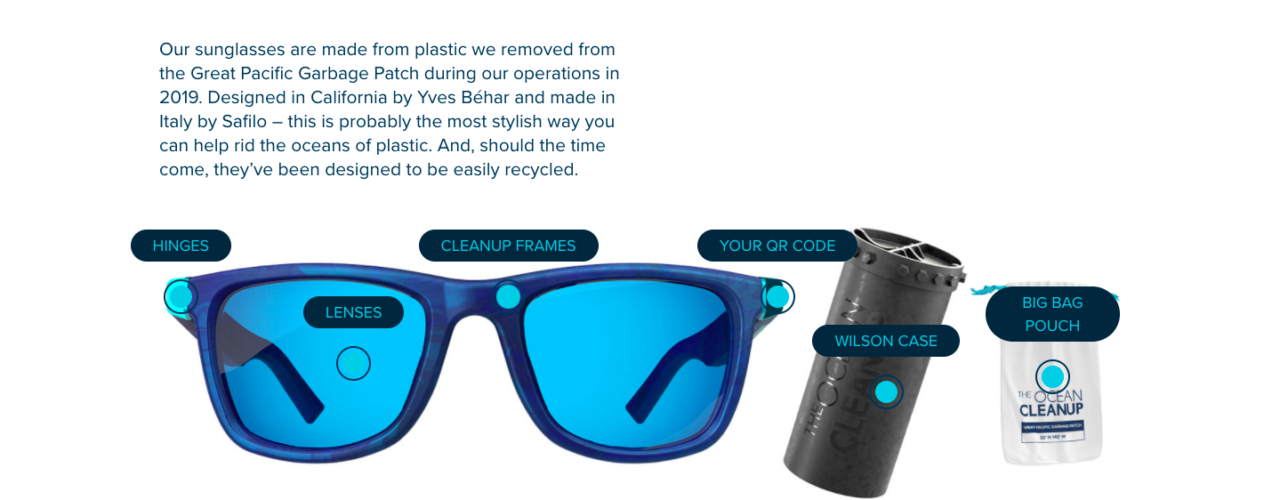The non-profit organisation have started to use their technology to rid the world’s oceans of plastic
There are now an estimated 5.25 trillion macro and micro pieces of plastic in our oceans. The number is only increasing, so in order to solve the issue, human intervention is needed. This is where Boyan Slat, CEO of The Ocean Cleanup has stepped in. The notion behind the cleanup is rather simple. Slat states that all we need to do to effectively solve the problem is ‘turn off the tap’ and then ‘mop the floor’. Meaning, we must halt the plastic flow from rivers, and remove the legacy plastics that are already there.
But, how does The Ocean Cleanup plan to achieve this? Here is all you need to know:
The Ocean Cleanup backstory
The nonprofit organisation was set up in 2013 by Boyan Slat, when he was just 18 years old. At the age of 16, Slat went scuba diving in Greece and was alarmed to see more plastic in the ocean than fish, so wished to find a solution to this problem. In 2012, he held a TedX talk about how to rid the world’s oceans of plastic using technology. The video went viral, and the momentum that followed allowed him to drop out of school and found The Ocean Cleanup.
The cleanup was not as smooth sailing as it is now, however. The current cleanup system, ‘002’ or ‘Jenny’ has a predecessor, ‘001’/’Wilson’, which was launched in 2018. It did not fully work as planned, as it didn’t catch as much plastic as Slat hoped. This is because some of the lighter pieces were still able to float away back into the ocean. Thus, the cleanup needed to return back to land and more technology developments occurred.
It was not all bad news though, as the plastic that system 001 did collect was recycled and turned into sunglasses that the public could buy. The Ocean Cleanup teamed up with top designer Yves Béhar and Italian eyewear brand Safilo to create the glasses, which tell the consumer exactly where in the ocean the plastic in the frames came from. The money raised from this was used to continue their technology, and now, system 002 is out removing plastic from the Great Pacific Garbage Patch as we speak.

So, How Does it work?
The circulating currents in the garbage patch move the plastic around. Due to this, there are hotspots of higher plastic concentration. The Ocean Cleanup uses the help of computational modeling in order to predict where these hotspots are and place the cleanup systems in these areas.
The cleanup system is essentially a large net with an open bottom, which is pulled along at either side by two vessels. The open bottom allows for both plastic to be caught, and ocean life to be saved. And, the two vessels maintain a relative speed difference to the plastic, so that the plastic can be caught in the retention zone of the cleanup system. They also correct the wingspan, speed, and direction of the system.
Once the system is full, the back of the ‘Retention Zone’- where the plastic is collected, is taken aboard. It is then sealed off, detached from the system, and emptied on board the vessel. Then, the cycle is repeated.
In the end, once the containers are full onboard the plastic is taken to shore to be recycled.
The Ocean Cleanup has also started to roll out smaller-scale autonomous technologies, named ‘Interceptors’. They remove plastic from rivers before they reach the ocean.
Plans for the future:
The Ocean Cleanup aims to reach full-scale deployment in both rivers and oceans. With the ultimate goal being cleaning up 90% of the world’s floating ocean plastic by 2040.
In order to achieve this, it is predicted another 9 full-size systems are needed to clean up the Great Pacific Garbage Patch.
They are continuing operations in the Great Pacific Garbage Patch. This will help to capture more plastic and gather more insights during the harsher winter sea-state.
In parallel, The Ocean Cleanup has plans to start working on a System 003. This iteration will incorporate modifications to the system’s hardware and will be three times the size of System 002, allowing even more plastic to be collected. System 003 will serve as the blueprint for scale-up.
All in all, the clean-up is a promising solution for the future, and we wish to see the technology continue.
To learn more about The Ocean Cleanup and its systems, click here.
For more of the latest industry news and content, click here.




.gif)
.gif)













